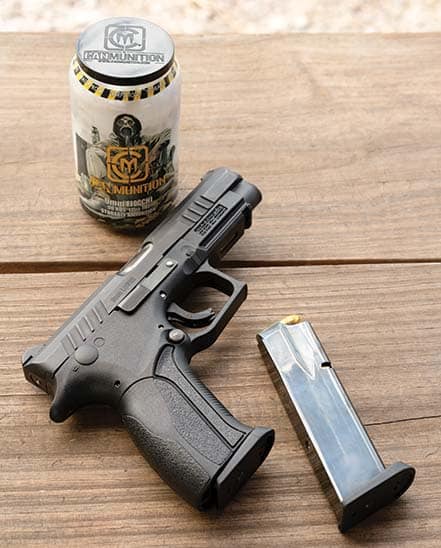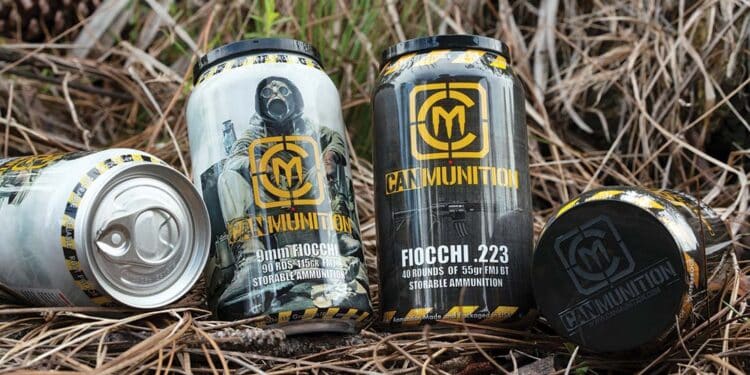Story & Photography by Oleg Volk
In 2019, Global Ordnance introduced its CanMunition™ line of 9mm Luger and 5.56mm Remington ammo packed in what looks like a soft drink can. Holding approximately 90 pistol cartridges or 40 rifle rounds, these nitrogen-filled cans have a wide pull-tab covering the entire top of the container. A snap-on, black plastic lid guards against accidental opening. The 5.56mm selected is 55-grain Fiocchi boat tail ball, a very consistent and reliable load. The 9mm is also by Fiocchi, a 115-grain ball cartridge.

Ammunition in sealed “spam” cans has been around at least since before WWII. American shooters are mostly familiar with the thick Soviet cans holding 440 or 880 rifle rounds, but other sizes have been popular as well. Bulgaria packed them in lots of 250; Serbia in lots of 800 or 1,000, but all of these long storage containers were meant for regimental use. The tins were bulky and usually required a tool to open, but they did fill the purpose of keeping the contents dry and clean. The countries that failed to figure out how to store ammunition properly, like Turkey and India, got the reputation for very questionable surplus. More recently, lighter plastic packaging has been developed to the same purpose, proving adequate for keeping humidity out but not for mechanical protection of the contents. CanMunition aimed to provide long-term storage without sacrificing the expediency of access, and in lots small enough to be portable.
The most recent run on ammunition culminated in distributors being out of the most common calibers less than a week after it began. Compared to the early 2000s, the availability of military surplus ammunition declined sharply because of the EU directive to destroy surplus instead of selling it. Anticipating this kind of problem, many prudent people stocked up on gun-food well in advance. Some have discovered that humidity, temperature fluctuations and other eventualities of storage resulted in the deterioration of the cache much sooner than expected. Cardboard packaging absorbing atmospheric humidity is one noted offender. Do CanMunition containers work better?
In most ways, yes. Nitrogen keeps rust and verdigris at bay quite effectively. The 40-round rifle ammo can weighs 18 ounces; the 90-round 9mm can is much heftier at 38 ounces. Either can be handled with ease. The tightly packed contents keep the thin aluminum of the container from deforming easily. The cans themselves have little thermal mass, and they provide minimal insulation from temperature fluctuations. One way to keep them at a relatively constant temperature in a hot car is to place them in a plastic cooler, arranged in a checkerboard pattern with water bottles acting both as a thermal sink and as an emergency liquid supply. If freezing temperatures can be reasonably expected, non-liquid heat sinks are preferred. The cartridges can be cold without ill effect, but avoiding sharp temperature rise is key. When shipped, the cans arrive wrapped in thick paper and enclosed in sealed cardboard boxes, providing some measure of thermal insulation.
Besides the obvious storage utility, these cans make great gifts. Everything, from the humorously ominous graphics on the can to the suitability for long-term retention, makes the cans not just a cute idea but also a very good one. The shelf life can be several decades, though it’s best if the oldest ammunition in the stash is rotated into use as newer stores are acquired. Needless to say, I’ve had zero problems with the contents when several hundred rounds of each caliber were put to use.
| This article first appeared in Small Arms Review V24N6 (June/July 2020) |












